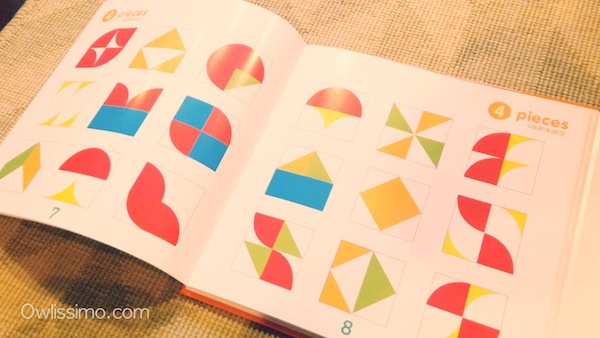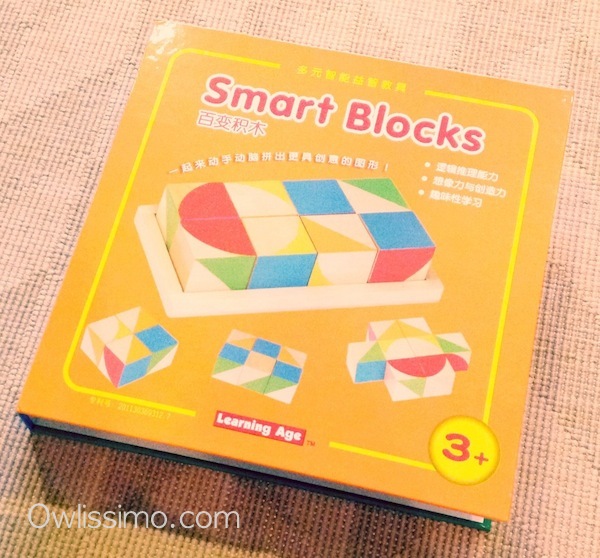When parents ask me about the “best” toys to get for their little children, I recommend blocks and other constructions toys, for endless possibilities of play.
Construction toys may help children develop:
- motor skills and hand-eye coordination,
- spatial skills,
- a capacity for creative, divergent thinking,
- social skills, and
- language skills.
(Source: Parenting Science)
Recently, a mummy needed ideas on playing IQ blocks with her toddler. Here, I’m going to use Build & Play Smart Blocks as a reference example. Smart Blocks are from the same manufacturer as IQ Genius 2 blocks available at Shichida Tensai bookstore. You may easily use the ideas on other types of blocks in your home.
Even though IQ blocks usually come with a set of puzzles to solve, you may also use them for supervised play. I emphasise “supervised” because if we were to leave IQ blocks for complete free play, one piece could be missing and that’s a disaster for an OCD mum like me!
Supervised play with blocks
For below 3 years old, it’s normal that the child doesn’t follow the guidebook yet.
He’s in the exploratory phase. You may start with these:
1. Knocking down phase
Babies and toddlers typically start off with knocking down block towers, and many enjoy it thoroughly! For children in this phase, I would offer a basket of wooden blocks with rounded corners that they’re free to build and knock down.
Restrict access to other blocks until they’re ready to play gently. This means no IQ blocks yet.
2. Creative play with blocks
- Place 2 to 3 blocks on a tray.
- Demonstrate how to build a simple block structure
- Invite the child to build freely.
- When the child is able to build carefully, then offer him more blocks.
As long as he’s playing gently, it’s fine. Discourage rough playing such as knocking it down mentioned earlier.
If the child tries to knock down the blocks, try to block his hand if possible. Say in a very concerned tone, “Oh dear, these blocks are VERY precious! Let’s check if they’re chipped. Please be more gentle next time.” (Idea credited to Ms. Karen Tyler of KHT Montessori online course)
Then re-direct his attention to another activity, for example the basket of blocks meant for knocking down.
3. Copying game with blocks
This game lets the child practise observation skills and manoeuvring of the blocks (hand-eye coordination). It also prepares her for memory games.
- Put 2 similar blocks on a tray. Introduce 1 block first. 1 block for you; 1 block for her.
- Say, “We’re playing a copying game.”
- Show him one face of the block (e.g. red quadrant), then invite her to turn his block and show the same side.
Extension:
- Repeat the above with the various sides. This helps him familiarise with the material, learn the colours / shapes as you describe them, and learn copying.
- Increase the number of blocks
As with all games, be happy and fun when playing.
4. Memory game with blocks
When you observe that the child is able to copy you rather well, you may move on to playing memory games.
- Put 2 similar blocks on a tray. Introduce 1 block first. 1 block for you; 1 block for her.
- Show her one side first, hide the block. For example, cover it with a plain handkerchief or put it in a box with lid.
- Invite her to show you the same side.
- Reveal the answer by showing your block. (Whether the child is able to answer correctly or not, there’s no need for big praises or negative remarks. You may smile and ask, “Would you like to try again?”)
Extension:
- Play with 2 blocks per person. Similar to above, you make a pattern with 2 blocks.
- Start with 2 similar sides.
- Then let her copy or play memory game.
- As he progresses, play with more blocks for copying (4 per person).
By this time, the child may be ready to play by referring to the guidebook.
Or you may continue guiding her.
5. Structured play using blocks guidebook
For example, the Smart Blocks come with a guidebook below:

- Refer to the first structure from the booklet.
- Place the needed blocks on a tray.
- Demonstrate to the child how to use the blocks to build the structure.
- Remove the blocks from the structure carefully, and place them back onto the tray.
- Invite the child to try.
- If the child is successful, demonstrate the next structure in the same or next session.
Happy block-playing!
~ MieVee
—
P.S. I only have a few sets of the Build & Play Smart Blocks for Malaysia address left here.


I am from India and would want to buy smart blocks
Hi Shefali, thank you for your comment. Smart blocks are out of stock at our store though. Hope you can find something similar near you.